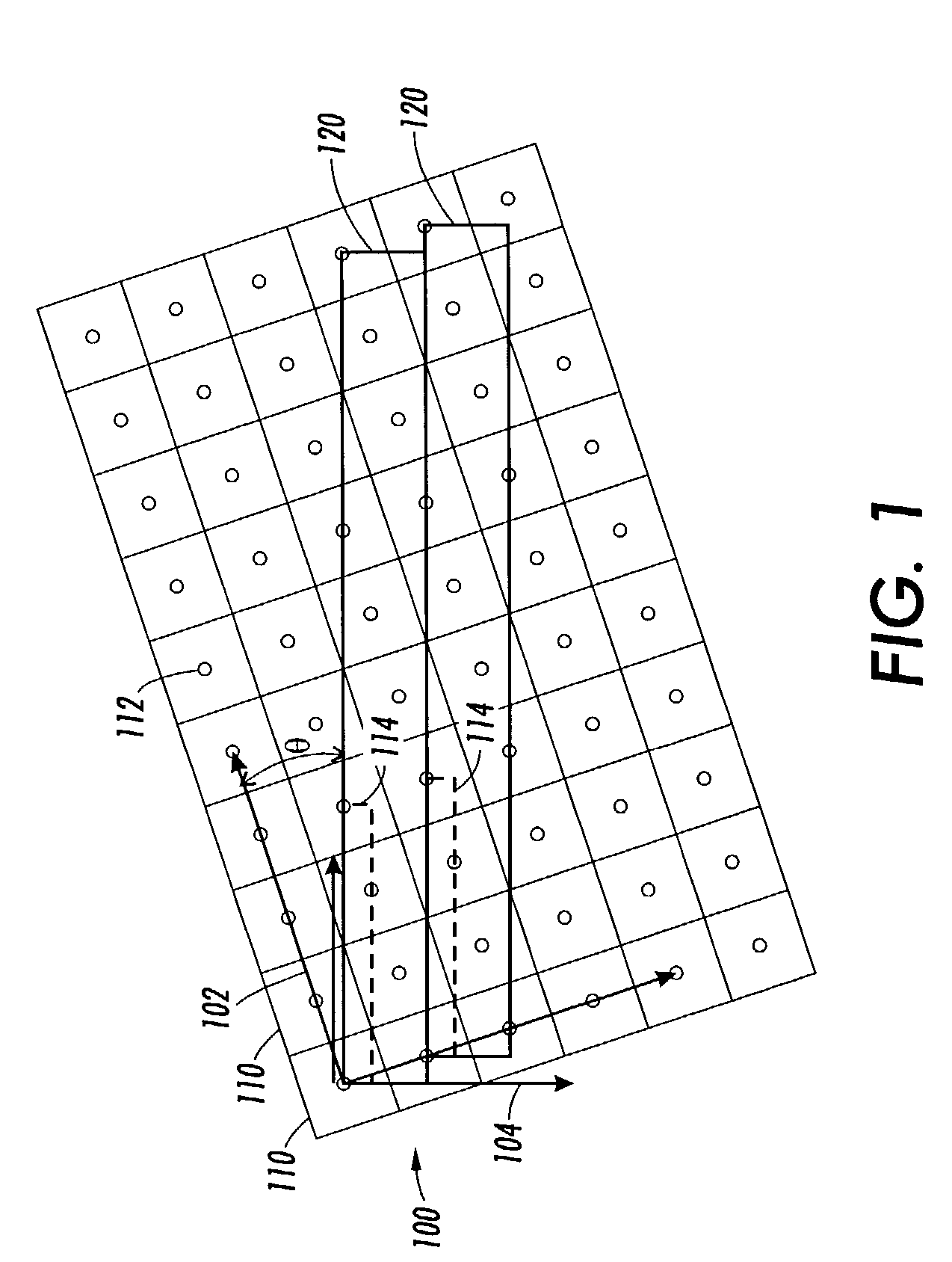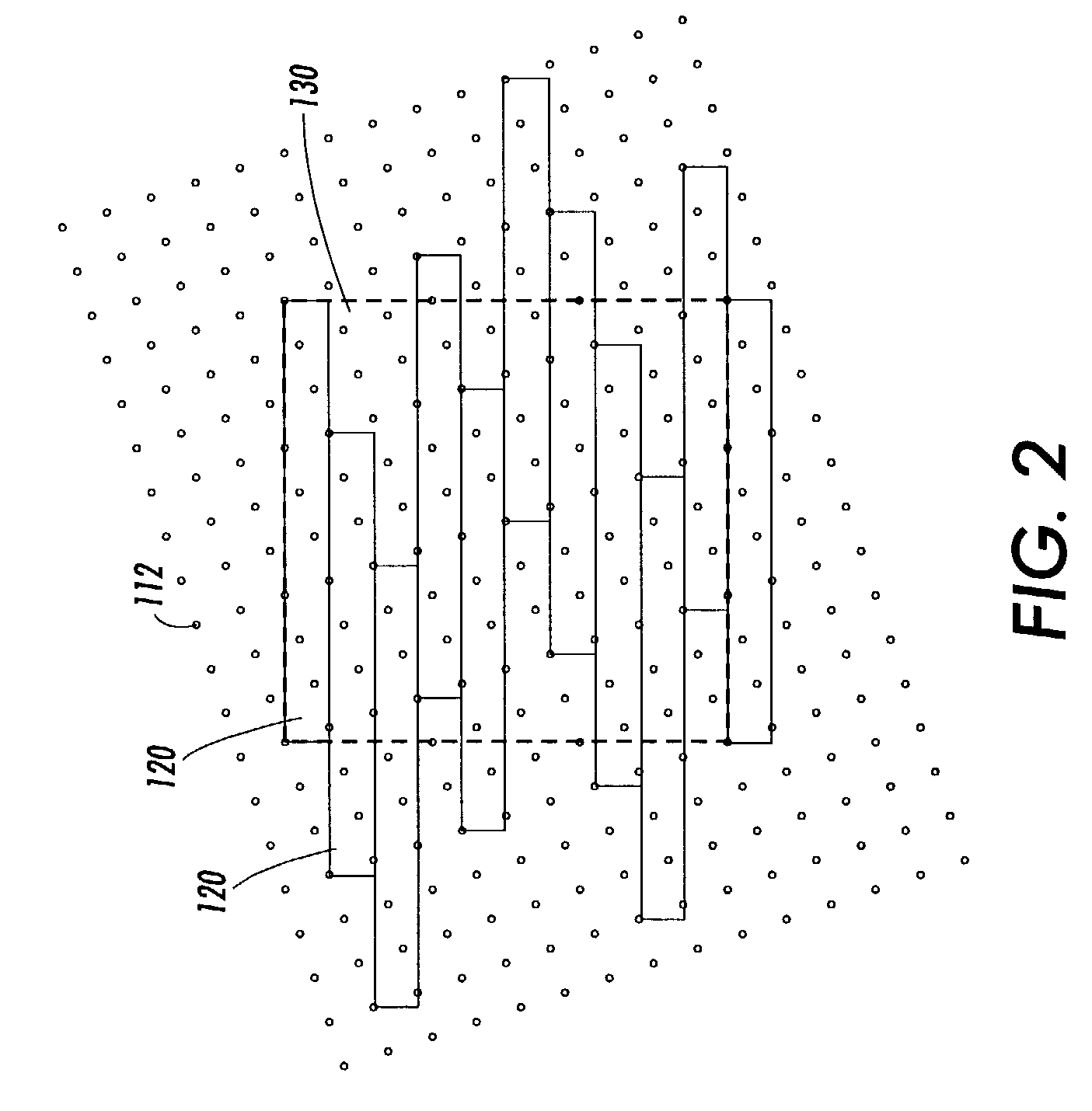Systems and methods for designing zero-shift supercell halftone screens
a technology of supercells and halftone screens, applied in the direction of electrographic processes, instruments, screening processes, etc., can solve the problems that the above-outlined conventional design tools were not designed with the requirements of square zero-shift supercells in mind, and the design of halftone screens using square zero-shift supercells is inherently inefficient process, so as to facilitate the placement of centers
- Summary
- Abstract
- Description
- Claims
- Application Information
AI Technical Summary
Benefits of technology
Problems solved by technology
Method used
Image
Examples
Embodiment Construction
[0038]Conventional square zero-shift supercell halftoning schemes require at least a search for all possible sizes of the zero-shift supercell to locate a square zero-shift supercell that is aligned with the centers of an integer number of halftone dots on each edge of the square zero-shift supercell. It should be appreciated that such a search results in a set of candidate square zero-shift supercells. A compromise is effected between the angle of the candidate square zero-shift supercell, the frequency spacing of the square zero-shift supercell, and the resolution of the printer on which the resulting halftone screen will be used. These factors result in conventional square zero-shift supercells having non-ideal angles and / or non-ideal square zero-shift supercell frequencies.
[0039]This invention provides systems and methods for designing a halftone screen having a square zero-shift supercell. In particular, in various exemplary embodiments, the systems and methods of this inventio...
PUM
| Property | Measurement | Unit |
|---|---|---|
| angle | aaaaa | aaaaa |
| length | aaaaa | aaaaa |
| side length | aaaaa | aaaaa |
Abstract
Description
Claims
Application Information
 Login to View More
Login to View More - R&D
- Intellectual Property
- Life Sciences
- Materials
- Tech Scout
- Unparalleled Data Quality
- Higher Quality Content
- 60% Fewer Hallucinations
Browse by: Latest US Patents, China's latest patents, Technical Efficacy Thesaurus, Application Domain, Technology Topic, Popular Technical Reports.
© 2025 PatSnap. All rights reserved.Legal|Privacy policy|Modern Slavery Act Transparency Statement|Sitemap|About US| Contact US: help@patsnap.com



